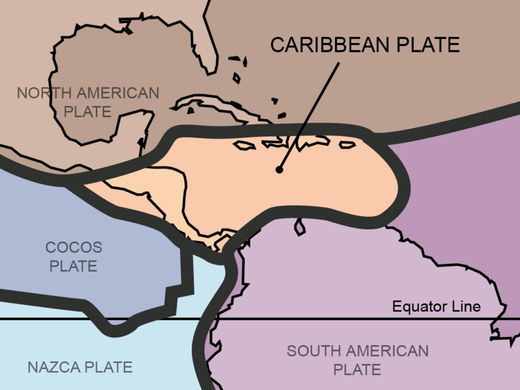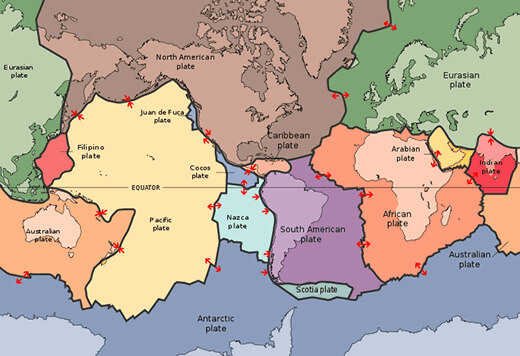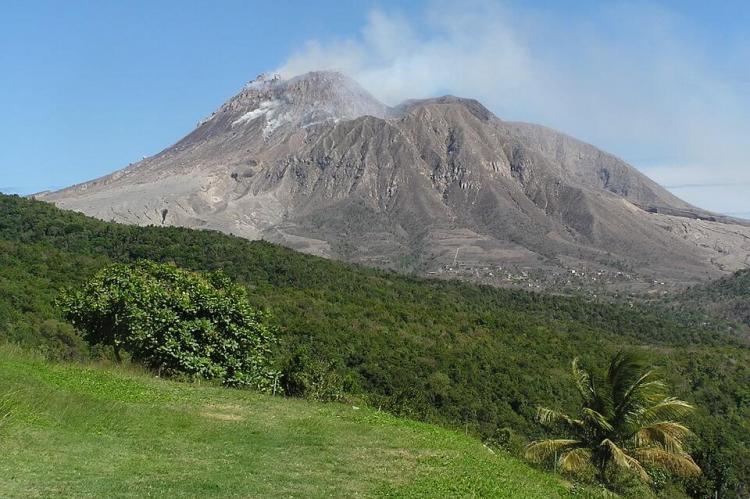The Caribbean Plate: A Mosaic of Tectonic Complexity
The Caribbean Plate, a predominantly oceanic tectonic plate, extends beneath Central America and the Caribbean Sea off South America's northern coast. This expansive plate interconnects with the North American, South American, Nazca, and Cocos, creating a mosaic of seismic activity.
The Caribbean Plate: A Mosaic of Tectonic Complexity
The Caribbean Plate, a predominantly oceanic tectonic plate, extends its influence beneath Central America and the Caribbean Sea off South America's northern coast. This expansive plate, covering approximately 3,319,000 square kilometers (1,281,000 square miles), interconnects with the North American Plate, South American Plate, Nazca Plate, and Cocos Plate, creating a mosaic of seismic activity, including earthquakes, tsunamis, and volcanic eruptions.
Northern Boundary: A Transform Drama
The northern boundary, interacting with the North American Plate, unfolds as a transform or strike-slip boundary. This boundary line traverses the border regions of Belize, Guatemala, and Honduras, extending eastward through the Cayman Trough. Continuing its journey south of Cuba and north of Hispaniola, Puerto Rico, and the Virgin Islands, it encapsulates the Puerto Rico Trench, the deepest segment of the Atlantic Ocean. This trench, reaching about 8,400 meters (27,500 feet), signifies the intricate transition between subduction to the south and transform boundaries to the west.
Eastern Boundary: The Lesser Antilles Subduction Zone
The eastern boundary emerges as a subduction zone, known as the Lesser Antilles subduction zone. Here, the oceanic crust of the South American Plate subducts beneath the Caribbean Plate, giving rise to the volcanic archipelago of the Lesser Antilles. This region harbors seventeen active volcanoes, including notable ones like Soufriere Hills on Montserrat, Mount Pelée on Martinique, and La Grande Soufrière on Guadeloupe. The complex geological dance culminates with the submarine volcano Kick-’em-Jenny, north of Grenada.
Southern Boundary: An Intricate Interface
The southern boundary intertwines the Caribbean Plate with the South American Plate, forming Barbados, Trinidad and Tobago, and islands off the coasts of Venezuela and Colombia. This geologically rich boundary is shaped by transform faulting, thrust faulting, and partial subduction, contributing to the intricate mosaic of Caribbean geology. The dynamic interaction in this region might be the genesis of the prolific Venezuelan petroleum fields.

Map depicting the Caribbean plate boundaries.
Central America: A Crucible of Subduction
Central America claims the Caribbean Plate's western expanse, where the Pacific Ocean's Cocos Plate undergoes subduction beneath it. This subduction process molds the Central America Volcanic Arc, fostering the creation of volcanoes in Guatemala, El Salvador, Nicaragua, and Costa Rica.
In conclusion, the Caribbean Plate emerges as a focal point of tectonic intricacies, orchestrating a geological symphony beneath the azure waters of the Caribbean Sea and the lands it cradles. The seismic events and volcanic formations etch a vivid story of Earth's dynamic evolution in this captivating region.

Map depicting the major tectonic plates of the world.
